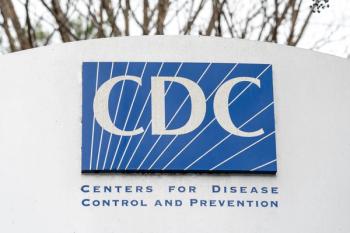
Finerenone in HFpEF and HFmrEF: Emerging Evidence and Guideline Updates
Emerging evidence for finerenone showcases the drug’s impact on heart failure with mildly reduced ejection fraction and heart failure with preserved ejection fraction.
Finerenone (Kerendia) is a selective nonsteroidal mineralocorticoid receptor antagonist that blocks aldosterone and cortisol, limiting inflammation and fibrosis in the kidney, heart, and vasculature.1 Approved by the FDA in 2021 for adults with chronic kidney disease related to type 2 diabetes, it gained an expanded approval in July 2025 for adults with heart failure and a left ventricular ejection fraction (LVEF) of 40% or greater after the phase 3 FINEARTS-HF (
Current heart failure guidelines highlight differences in evidence across ejection fraction groups. The 2022 American Heart Association/American College of Cardiology/Heart Failure Society of America Heart Failure Guideline gives spironolactone or eplerenone a class I recommendation with level of evidence A for patients with reduced ejection fraction (LVEF ≤40%).2 However, for mildly reduced (HFmrEF, LVEF 41%-49%) and preserved ejection fraction (HFpEF, LVEF ≥50%), mineralocorticoid receptor antagonists (MRAs) carry only a class IIb recommendation with level of evidence B-R, meaning the drug may be considered to lower heart failure hospitalizations, but the supporting evidence is limited. The Treatment of Preserved Cardiac Function Heart Failure with an Aldosterone Antagonist (TOPCAT;
The 2023 European Society of Cardiology guideline offers a similar class IIb recommendation for HFmrEF and does not recommend MRAs for HFpEF.4 These limitations highlight the need for more effective options and place the FINEARTS-HF findings in context. With the recent FDA approval, it will take time to see how health plans adjust formularies, how cost-effectiveness assessments such as those from the Institute for Clinical and Economic Review (ICER) evolve, and when major guidelines are updated. The most recent development came in June 2025 with the new Japanese heart failure guidelines.5 In this update, finerenone was elevated to a class IIa recommendation, whereas spironolactone and eplerenone remained class IIb, reflecting the FINEARTS-HF results.
Moreover, differences in mechanism of action help explain finerenone’s clinical advantages. Unlike the steroidal MRAs spironolactone and eplerenone, which recruit cofactors and act as partial agonists, finerenone blocks cofactor recruitment altogether and produces stronger anti-inflammatory and antifibrotic effects.6 Spironolactone has high receptor affinity but low selectivity, accumulates mainly in the kidney, and forms long-acting metabolites. Eplerenone has lower affinity and moderate selectivity and no active metabolites. Finerenone combines high affinity with high selectivity, distributes evenly between kidney and heart tissue, and lacks active metabolites. Clinical results mirror these mechanistic differences: in the BARACK-D (
The future landscape of HFpEF and HFmrEF therapy will depend not only on emerging efficacy data but also on how these findings intersect with health system decision making, formularies, and long-term cost effectiveness. Incorporating a new comorbidity into economic models inevitably introduces uncertainty. While trial data exist for this population, the lack of robust head-to-head comparisons with legacy MRAs such as spironolactone or eplerenone complicates comparative-effectiveness estimates. Historically, these older agents were prescribed on the basis of weak or indirect evidence, making them less reliable benchmarks for modern cost-effectiveness analyses. By contrast, finerenone is supported by direct trial data and a more favorable safety profile, with the potential to reduce adverse event costs, improve quality of life, and strengthen adherence. Previous United States-based lifetime Markov models evaluating finerenone in chronic kidney disease related to type 2 diabetes have shown how ICERs, quality-adjusted life-year (QALY) gains, and probabilistic sensitivity analyses capture both value and uncertainty over extended horizons, with finerenone demonstrating an incremental cost-effectiveness ratio of $135,257 per QALY for its original indication.8 This figure falls below the commonly cited US willingness-to-pay threshold of $150,000 per QALY, though any potential label expansion into HFpEF or HFmrEF could alter these projections. Taken together, these factors position finerenone as a drug with the potential to deliver stronger long-term cost effectiveness than legacy alternatives, even as residual uncertainty remains regarding relative performance in HFpEF.
The SPIRRIT-HFpEF (
READ MORE:
Are you ready to elevate your pharmacy practice? Sign up today for our
REFERENCES
1. Kerendia (finerenone) [prescribing information]. Whippany, NJ: Bayer HealthCare Pharmaceuticals Inc. 2025. Accessed September 20, 2025. https://www.accessdata.fda.gov/drugsatfda_docs/label/2025/215341s009lbl.pdf
2. Heidenreich PA, Bozkurt B, Aguilar D, et al. 2022 AHA/ACC/HFSA Guideline for the Management of Heart Failure: A Report of the American College of Cardiology/American Heart Association Joint Committee on Clinical Practice Guidelines. Circulation. 2022;145(18):e895-e1032. doi:10.1161/CIR.0000000000001063
3. Pitt B, Pfeffer MA, Assmann SF, et al. Spironolactone for heart failure with preserved ejection fraction. N Engl J Med. 2014;370(15):1383-1392. doi:10.1056/NEJMoa1313731
4. McDonagh TA, Metra M, Adamo M, et al. 2023 Focused Update of the 2021 ESC Guidelines for the diagnosis and treatment of acute and chronic heart failure: developed by the task force for the diagnosis and treatment of acute and chronic heart failure of the European Society of Cardiology (ESC) with the special contribution of the Heart Failure Association (HFA) of the ESC. Eur Heart J. 2023;44(37):3627-3639. doi:10.1093/eurheartj/ehad195
5. Kitai T, Kohsaka S, Kato T, et al. JCS/JHFS 2025 Guideline on Diagnosis and Treatment of Heart Failure. Circ J. 2025;89(8):1278-1444. doi:10.1253/circj.CJ-25-0002
6. Kobayashi M, Girerd N, Zannad F. When to use spironolactone, eplerenone or finerenone in the spectrum of cardiorenal diseases. Nephrol Dial Transplant. 2024;39(7):1063‐1072. doi:10.1093/ndt/gfae004
7. Agarwal R. Steroidal or nonsteroidal mineralocorticoid receptor antagonists for reducing cardiovascular burden in chronic kidney disease. Kidney Int. 2025;108(1):11-14. doi:10.1016/j.kint.2025.03.010
8. Zheng C, Wu J, Li N, et al. Cost-effectiveness of finerenone added to standard of care for patients with type 2 diabetes-related chronic kidney disease in the United States. Diabetes Obes Metab. 2025;27(1):165-173. doi:10.1111/dom.15997
9. Lund LH, James S, DeVore AD, et al. The Spironolactone Initiation Registry Randomized Interventional Trial in Heart Failure with Preserved Ejection Fraction (SPIRRIT-HFpEF): Rationale and design. Eur J Heart Fail. 2024;26(11):2453-2463. doi:10.1002/ejhf.3453
Newsletter
Pharmacy practice is always changing. Stay ahead of the curve with the Drug Topics newsletter and get the latest drug information, industry trends, and patient care tips.






































































































































